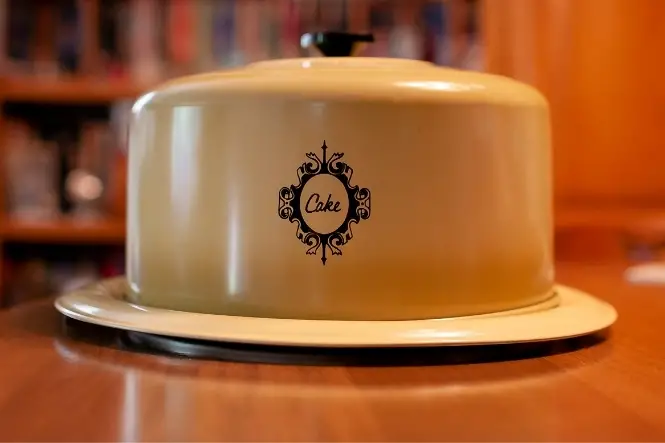You’ve spent hours in the kitchen baking the perfect cake its fragrant aromas wafting gently through the house. Now the hard work is done, don’t let it go to waste by neglectful storage. Read our tips on successful storage to get the best from every cake you bake.
Working Out the Use-By Date
If you need to bake a cake well in advance, you have two options: play safe with a Fruit or Nut Cake – dense, and made with alcohol – or bake a cake which will freeze well.
Fruit cakes are the best keepers, particularly if they’re soaked with alcohol like brandy, which acts as a preservative. You can keep a Christmas or wedding cake (wrapped in a double layer of greaseproof paper and foil, and kept in a tin) for about three months, ‘feeding’ it with alcohol from time to time – in fact, it will probably taste all the better for it.
For other cakes, two factors influence the storage capacity: the cake ingredients, and the Type of Icing. Any cake made with perishables (ingredients you’d normally keep in the fridge, like cheese and cream) will be best off kept in the fridge and eaten within a few days. Cakes filled with jam will keep happily at room temperature for up to about 5 days (any longer and the jam can start to form mould).
As for icings: Buttercream Icing, made with fresh butter, will keep in the fridge for a fortnight; meanwhile, royal fondant icing, once dried in the open, will keep in an airtight tin for up to three months. Cream-based, custard-based and other soft icings have to go in the fridge, but any glace icing-topped cakes will be fine at room temperature (in a container or cake dome) for a few days or even more.
Wrapping and Keeping
Tins have always been used for cake storage, and with good reason. Modern Tupperware, wonderful for sandwiches and leftover beans, has a tendency to take on the scent of food that’s been kept inside it. Unless it’s brand new, choose a cake tin instead, which will keep out air and unwelcome smells. Your cake will then taste exactly as it did when it was first baked. After all, you don’t want a cheddar-and-onion scented date loaf, do you?
For added security, wrap your cake in greaseproof paper before placing it inside the tin. If your cake is a cream-filled sponge or a dramatic cheesecake, you could also use a glass cake dome: the glamorous way to store and serve! Keep this inside the fridge and if you’re worried about scent penetration, line the cake with paper before putting it in.
Where to keep it? The most important thing is to ensure you keep the cake away from sunlight, heat sources, and areas of high humidity – all of these can affect it negatively.
Want to Bring Out Freshly Baked Cakes?
Here’s a hint – if you are expecting guests and you’d like to bake in advance, but you’d also like to bring out cakes that are still warm from the oven, choose a recipe that permits a gap between mixing and baking. Pastry-based cakes will be fine, since pastry will sit for up to two days in the fridge; scones and griddle cakes will also work well. Simply make up the pastry or cake dough in advance, then wrap it well in clingfilm and put into the fridge. When you’re ready to roll it out, preheat the oven, roll and cut your cakes. They will be freshly baked, and you won’t have spent an hour in the kitchen making them.
Cakes as Gifts
Miniature fruit cakes are perfect for neighbours at Christmas. Just make sure you don’t ice them until the last minute – instead, keep them tightly wrapped with the main cake, feeding with brandy throughout December. Cover with marzipan and royal icing the day you plan to give the cakes, then wrap in clear acetate and tie a use-by tag to the neck (including storage directions for best keeping). If you’re planning to give another type of cake, you will have to make it on the day – why not find a vintage cake tin to package them in?
Freezing and Serving
Don’t forget to read our tips on How To Freeze Your Cakes and Serving Your Cakes in this section, too.

